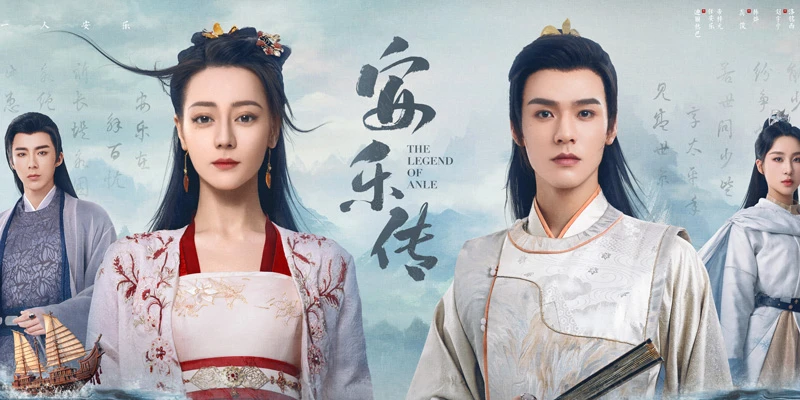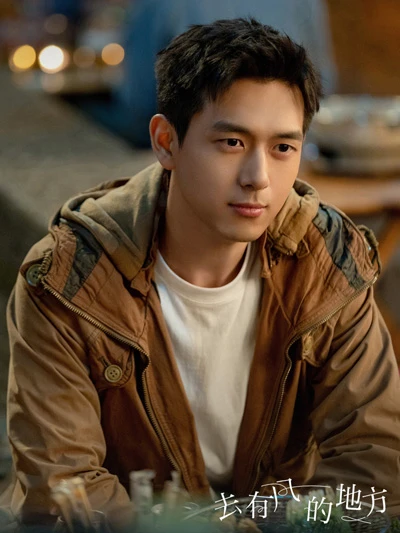The recently premiered costume drama "Lost You Forever" starring popular actress Yang Zi, along with actors Zhang Wanyi, Deng Wei, and Tan Jianci, tells a mythical story about family ties, love, and friendship. And the romantic costume drama "Legend of Anle," starring Dilraba Dilmurat and Gong Jun, depicts their journey of protecting their home and country for the well-being of the people.
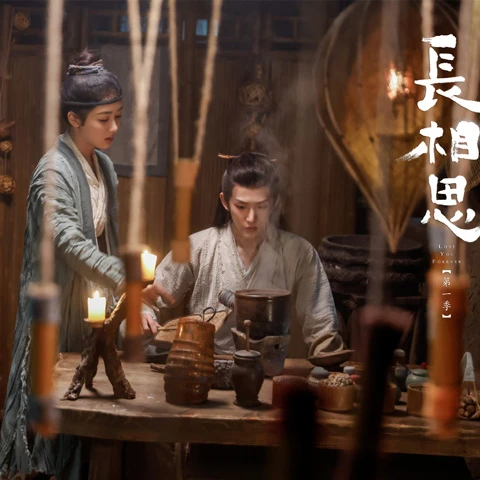
Lost You Forever
With the development of the film and television industry, character designs and relationship configurations in various genres of dramas have also changed accordingly. Therefore, observing the changes in the arrangement of characters on screen can serve as a window to observe industry trends and reflect the public's aesthetic evolution. Creators who target emerging trends can seize opportunities. Upgrading character combinations within familiar patterns becomes one of the key aspects of TV drama evolution.
Matching characters with themes
"Lost You Forever" has quickly gained popularity due to its fresh combination of one female protagonist paired with three male characters. Adapted from a novel by Tong Hua, it revolves around Xiao Yao (played by Yang Zi) as she navigates her destined path while entangled in a complex relationship of emotional relationships. She has childhood friend Cang Xuan; shares a deep connection with Tu Shanjing; and finds solace in Xiang Liu's companionship. With all three men revolving around her life story so closely intertwined with romance-related desires cherished by women.
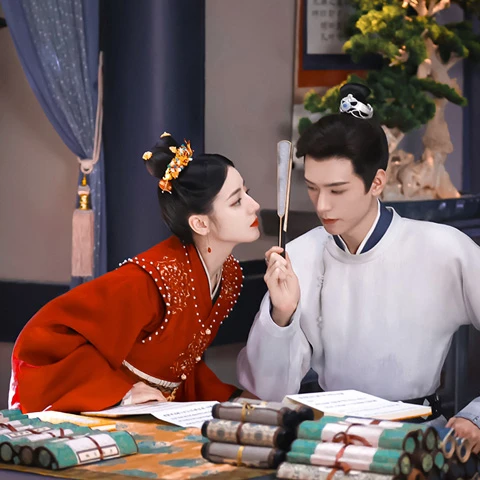
Legend of Anle
Compared to "Lost You Forever," which features intricate multi-dimensional emotional arcs, "Legend of Anle" appears relatively simpler in terms of its romantic dynamics. Both male and female leads are career-oriented individuals engaged in an equally matched love affair, an alteration from conventional plot structures being that the female lead possesses dual identities between lightness and darkness while incorporating elements such as mystery-solving cases or lighthearted comedy.
In fact, if we observe character configurations in Chinese dramas over the past decade, we can identify several common patterns, with different genres often corresponding to matching character combinations. The benchmark palace drama "Empresses in the Palace" follows a typical pattern of "one male, multiple females." With the emperor at the center and numerous concubines surrounding him, it reflects the survival status of women in patriarchal society.

Empresses in the Palace
This character configuration has become a standard in palace intrigue dramas, as seen in later works such as "Story of Yanxi Palace" and "Ruyi's Royal Love in the Palace". In these dramas, the male protagonist, being the center of power, must be dominant, while female characters often end up as sacrificial victims and remain in a disadvantaged position.
The combination of "one woman with multiple men" is commonly found in dramas centered around strong female leads. Examples include costume dramas like "Princess Agents," "Lost You Forever," and "The Flame's Daughter," as well as urban dramas with strong female themes such as "Ladies in Beijing."
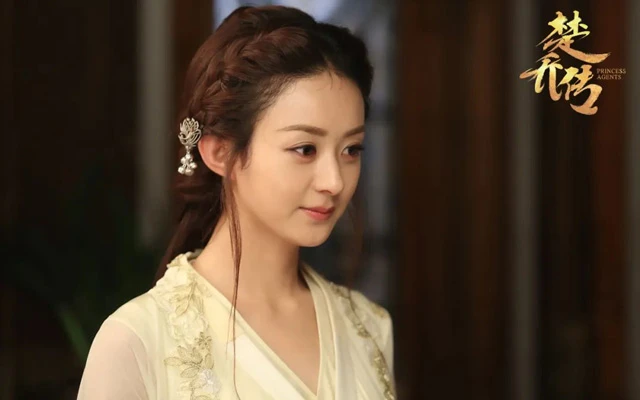
Princess Agents
In these dramas, male characters mostly serve to enhance the brilliance of the female lead and reflect a new perspective that challenges traditional views on masculinity. However, blindly catering to female audiences does not always resonate with viewers because some dramas fail to truly delve into the female perspective and instead use it merely for sensationalism.
Throughout film and television history from past to present, we see parallel development between male dominance/female subservience narratives alongside those featuring strong women/submissive men. Examples of male-dominant narratives include shows like "Fights Break Sphere," "My Best Summer," "Love Between Fairy and Devil," and "Love Like the Galaxy," across various genres including urban romance, historical costume drama, and campus youth drama.
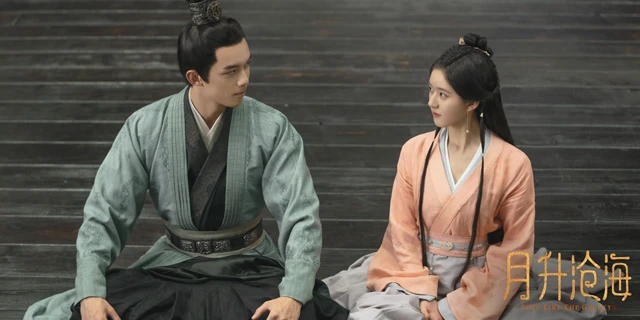
Love Like the Galaxy
In different narrative frameworks or worldviews, although male protagonists come from different backgrounds or positions of superiority/high status; whereas most often than not females are portrayed looking up to them before undergoing personal growth themselves. To some extent, this relationship dynamic places both male and female leads respectively at positions of leadership or followership.
On the other hand, the combination where females are depicted stronger than males is more common in female themed stories such as "Schemes of a Beauty", "Romance of Our Parents ", "The Story of Xing Fu", and "Wild Bloom".
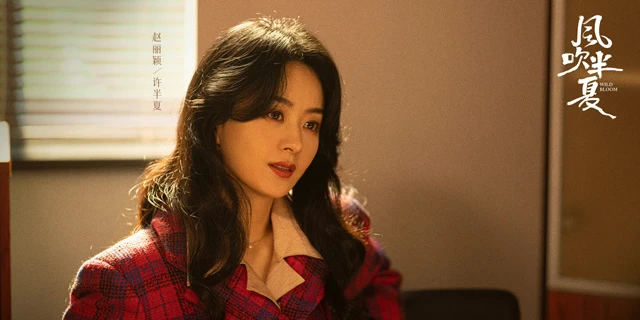
Wild Bloom
Whether it is love stories set against class differences in period dramas, or queen-like female leads in historical costume dramas, or assertive women in marital relationships within urban settings, or themes such as age-gap relationships, rural life, and business wars that feature independent-minded females; their inherently strong characteristics resonate with awakened consciousness of female viewers beyond the screen.
As for the configuration of strong male and female characters, it is quite common in works that focus on careers. Regardless of the theme, the portrayal of men and women pursuing their careers is always prominent. For example, in dramas such as "A Dream of Splendor," "The Ingenious One," "The Sword and the Brocade," and "You Are My Glory", the main characters either join forces due to a shared belief, form alliances to achieve their respective goals, or shine brightly in their individual fields. In short, it showcases the pinnacle meeting between male and female protagonists.
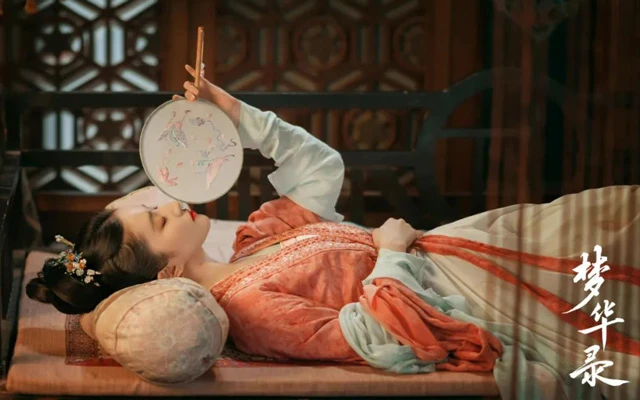
A Dream of Splendor
There is also another type of character combination found in ensemble dramas where multiple pairs of male and female leads are featured. Works like "Nirvana in Fire", "Ode to Joy", "White Deer Plain", and "The Knockout". These genres often lean towards themes with a more masculine tone such as espionage, historical costume drama, crime investigation, mystery, different eras or realism; alternatively they may explore urban women's lives through an ensemble cast consisting of multiple men and women.
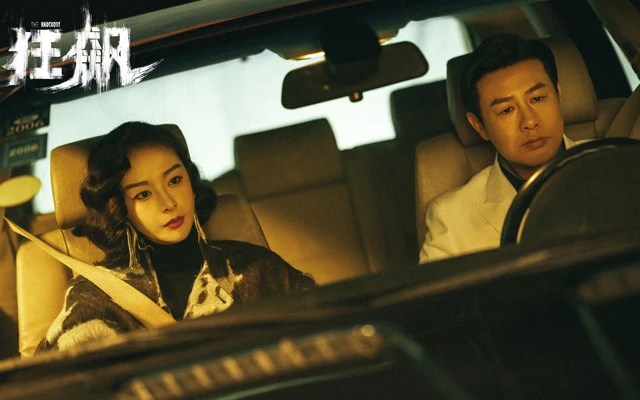
The Knockout
How can characters break free from conventions and evolve?
The evolution in character combinations seen within Chinese dramas is somewhat linked to the development of the film & television industry as well as the progressive aesthetics embraced by society. During a period when production companies were creating copyright dramas while television stations and streaming platforms were acquiring content for broadcast purposes; several types of plays became popular.
Firstly, produced idol dramas influenced by Hong Kong & Taiwan culture where most male-female leads played roles resembling dominant superiors paired with sweet heroines thus providing perfect boyfriend templates for female audiences at that time.

The Ingenious One
The second type consisted primarily urban lifestyle and period dramas which rooted themselves in reality, having a more serious tone and a lesser sense of escapism. These dramas were composed of an ensemble cast where minor characters portrayed the tip of the iceberg reflecting the lives of ordinary people. Consequently, the characters had down-to-earth qualities that appealed universally.
Thirdly, hardcore crime mysteries; in the pastwhen creative freedom was more prevalent, protagonists in these dramas were often depicted as opposing forces between good and evil. The portrayal of human nature was explored to its depths serving as a warning by exposing its dark side.

The Sword and the Brocade
Fourthly, various types of costume dramas catering to different tastes: either portraying strong female leads or fierce competition among women; alternatively, they would give their protagonists tragic destinies and tumultuous love stories in delivering both exhilaration and heartbreak.
During those times when internet communication was limited due to underdeveloped technology platforms, public preferences for dramas usually followed whatever content production companies chose to create while platforms decided what got broadcasted as long it wasn't too subpar. Thus acceptance from audiences could be easily achieved. In other words, the aesthetic sensibilities back then were still being nurtured.
This is also why some classic television works continue to be reinterpreted by netizens even today. The matured evolution of popular aesthetics on the one hand, and solid character development seen in previous film & tv productions, on the other hand contribute significantly towards such reinterpretations. For example, in "Empresses in Palace", viewers have even specialized in studying the characters and plot of the show.
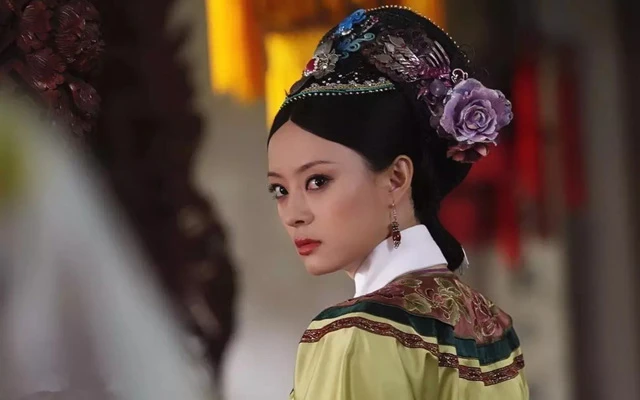
Empresses in Palace
In recent years with influxes from capital markets into the drama industry causing disruptions, this has led to projects aiming for quick profits resulting in compressed project timelines. This has subsequently given rise to issues such as logical inconsistencies within character arcs, misalignment with audience aesthetics at that time etc. Video streaming platforms entering earlier stages within industrial chains further contributed towards chaotic growth especially within web series segment exacerbating these problems.
Characters in drama lacking the emotional resonance with audience. Especially in the decline of dramas with dominant male and female leads, as well as outdated storylines that are being criticized. Ultimately, it is the aesthetic fatigue caused by various formulaic character combinations.
After a cold winter for film and television, the industry has begun to rectify itself under the guidance of content as the key point, entering a period of meticulous cultivation for Chinese dramas. As a result, characters in some works have gradually gained vitality and learned to resonate with their target audience by synchronizing with the pulse of the times.
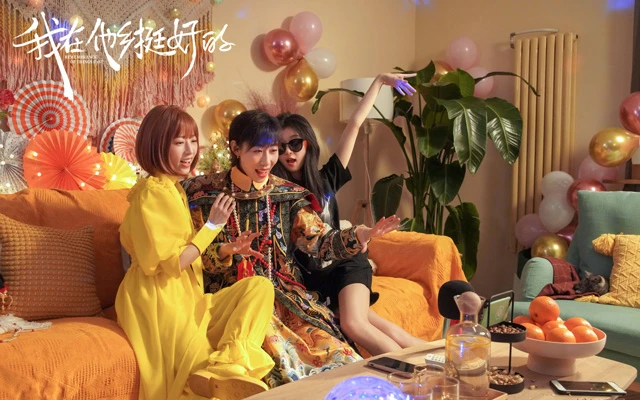
Remembrance of Things Past
For example, female characters in certain genres have truly awakened consciousness and become mirrors reflecting real-life struggles. Like "Remembrance of Things Past" and "Delicious Romance," these two dramas portray female friendships and personal challenges realistically yet exquisitely, without burdening their male counterparts.
This is an encouraging signal but what cannot be ignored is that there still exist many flawed characters in drama on the market. One way for practitioners to break through this dilemma is through innovative themes combined with innovative characters. Because innovative themes imply that characters created on this foundation inherently possess novelty while breaking free from clichés to achieve growth evolution becomes a driving force. Some popular shows aired in recent years provide some insights into solving this problem.
The healing drama "Meet Yourself" features both male and female leads who appear weak externally but strong internally; they seem to be tormented by real-life pressures yet embody an attitude of nonchalance or even resignation against today's achievement-oriented society. This unconventional character design allows their growth trajectory - starting from restraint before achieving breakthroughs - to become more authentic and impactful.
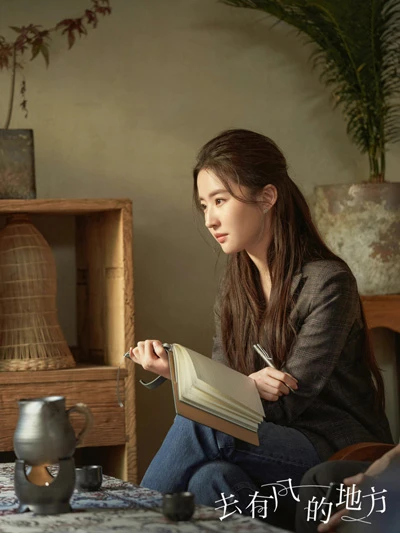
In the suspenseful drama "The Long Season," all three main male characters are middle-aged men who present themselves as dispirited individuals completely diverging from the mainstream protagonists in domestic dramas. However, their human radiance, as well as the contrasting rough edges of their humanity, enhance the depth and believability of the characters, resulting in a high level of empathy that propels the show to stand out.

The Long Season
In the time loop drama "Reset," the focus is on interpreting the tension between human nature and societal mechanisms. Thus, through male and female leads' inner conflicts while defending truth, goodness, and beauty at all costs - along with supporting roles entangled in extreme criminal thinking - creators deliver poignant reflections to viewers through an outstanding ensemble cast.
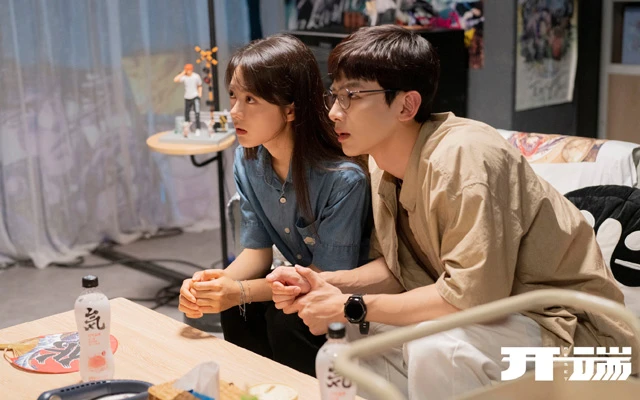
Reset
"The Bad Kids" boldly employs a combination of seasoned actors from different generations alongside young performers. This age-spanning ensemble enhances dramatic tension by dissecting adult world's cruelty through children's perspectives. "A Lifelong Journey" showcases exceptional acting skills from its entire cast; it provides a stage for both middle-aged actors and veteran performers to shine brightly thereby benefiting the series.
Characters in film and television serve as bridges for direct communication with audiences; whether they can touch people's hearts largely determines how well-received a production will be. When industry trends shift or public aesthetics change, practitioners should understand how to think from their target audience's perspective when creating character combinations and designs for corresponding themes. Conducting thorough preliminary research and incorporating some fresh ideas are essential steps towards enhancing character brilliance.
